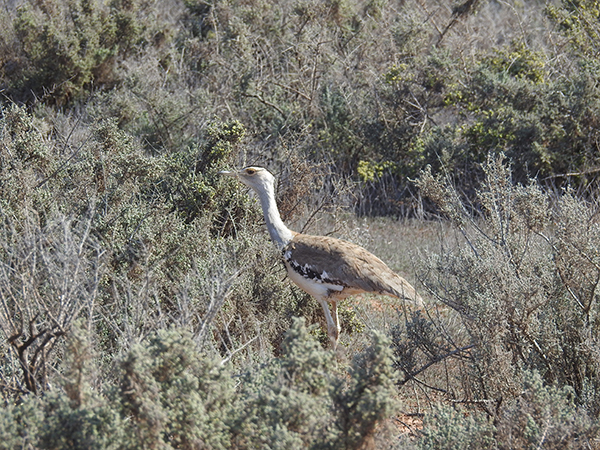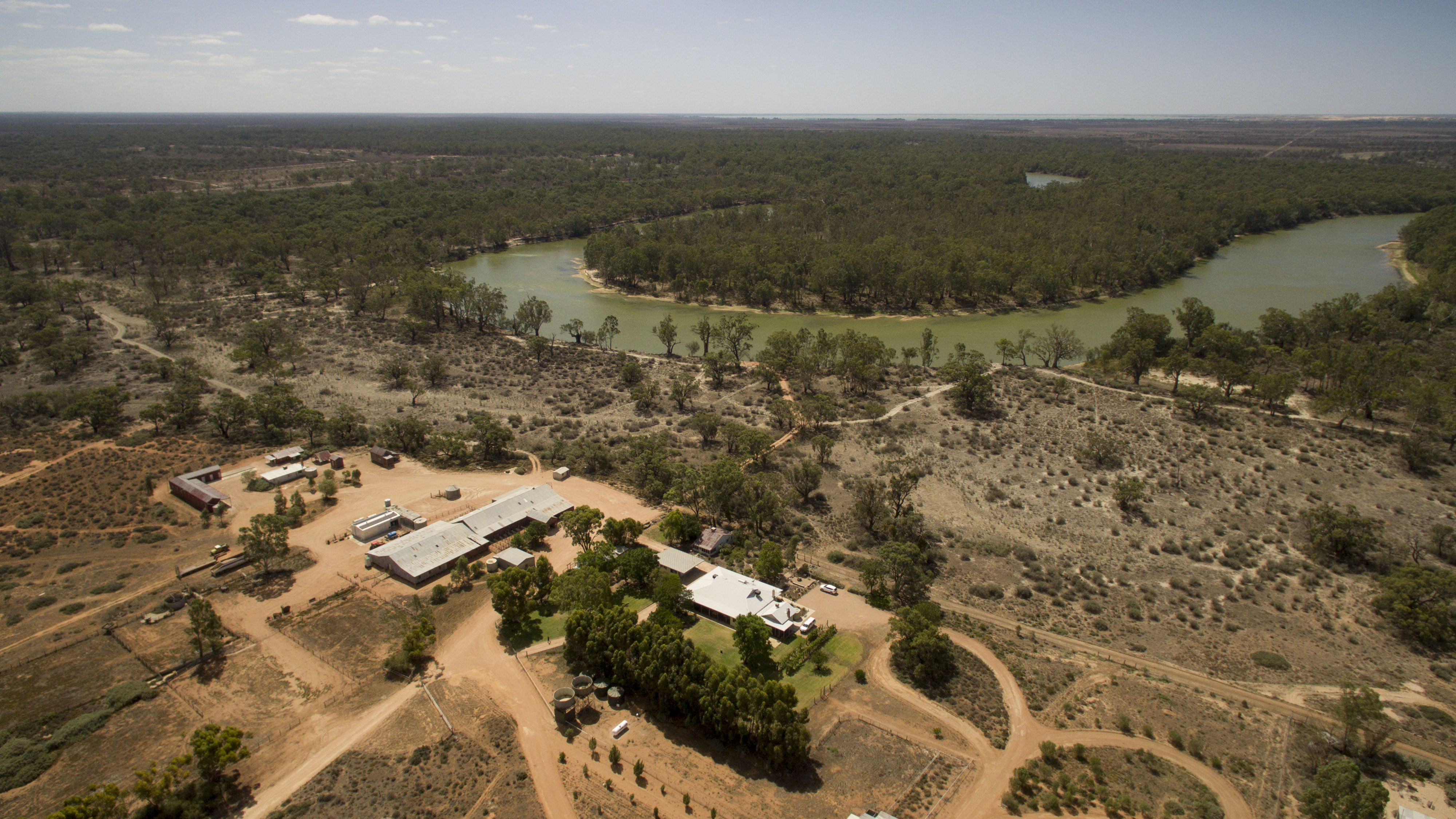Neds Corner Station wins rabbit battle
The bustards are a testament to the dramatic rehabilitation the 30,000 hectare Neds Corner Station has undergone since 2002. Had the birds flown across back then, they would have looked down at a heavily grazed property, blowing red dust with bare clay pans and lots of rabbits, and kept flying.
Neds Corner Station in North West Victoria is one of 43 conservation reserves owned by Trust for Nature.

A bustard sighted at Neds Corner Station. Photo: Peter Barnes.
When the Trust purchased the property there were more than 30 rabbits per spotlight kilometre. After more than a decade of work the average is now 0.4 rabbits per spotlight kilometre.
This success is due to a range of controls including destroying warrens, laying poisoned baits, shooting, releasing the Calicivirus and installing vermin-proof fences. Over 20,000 warrens have been treated, 13,000 of them destroyed.
Knowing how to most effectively control the rabbits on Neds Corner was initially a process of trial and error and methods have changed and refined over the years. The property’s sheer size makes the job difficult.
“We were good at killing them, but not so good at controlling them,” Peter said.
“We used to get straight into ripping up warrens which would only leave the rabbits homeless and force them to live on the surface, finding homes in bushes and anywhere they could hide.”
Reducing the number of rabbits before destroying warrens was a more effective approach.

Controlling rabbits has transformed Neds Corner Station, allowing indigenous species to move back in.
Five hundred hectares of the property has also been fenced to keep predators and rabbits out. This enables Trust for Nature to explore the potential of reintroducing regionally extinct animals to the property.
Rabbit control is ongoing, and is likely to continually play a part in managing this important conservation property.
“Once you get down to low numbers you just cannot stop working. Now if we notice rabbits in a spot or re-infesting, we’ll treat that as it comes up,” Peter said.
Controlling the rabbits has completely transformed Neds Corner Station and allowed indigenous species to move back in. As one of Victoria’s largest conservation reserves, it is now home to more than 1000 native plant and animal species, including 77 threatened plants, 24 reptiles and 112 types of birds. Researchers have found 21 species not previously known to science and among its many wonders is a new species of daisy for Victoria.
And, fingers crossed, the bustards will like what they see and permanently call Neds Corner Station home.



